Osiris
Videos
Page
Osiris is the god of fertility, agriculture, the afterlife, the dead, resurrection, life, and vegetation in ancient Egyptian religion. He was classically depicted as a green-skinned deity with a pharaoh's beard, partially mummy-wrapped at the legs, wearing a distinctive atef crown, and holding a symbolic crook and flail. He was one of the first to be associated with the mummy wrap. When his brother Set cut him up into pieces after killing him, Osiris' wife Isis found all the pieces and wrapped his body up, enabling him to return to life. Osiris was widely worshipped until the decline of ancient Egyptian religion during the rise of Christianity in the Roman Empire.

Head of the God Osiris, c. 595–525 BC. Brooklyn Museum
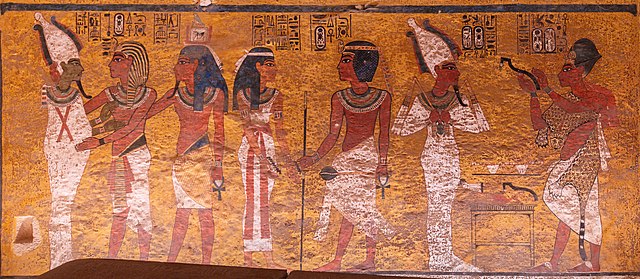
Scenes from the north wall of the burial chamber of Tutankhamun. On the left side, Tutankhamun, followed by his ka (an aspect of his soul), embraces Osiris.
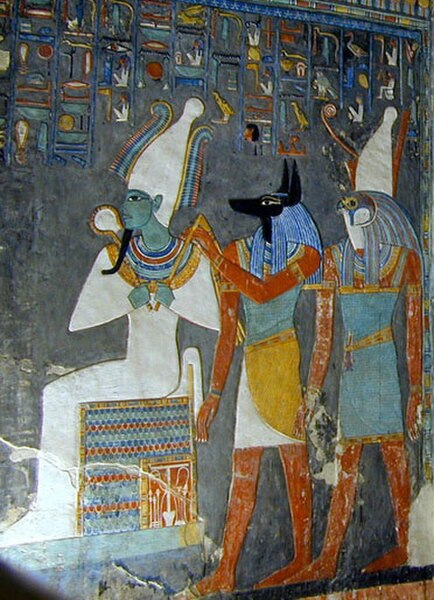
The gods Osiris, Anubis, and Horus. Wall painting in the tomb of Horemheb (KV57).

The family of Osiris. Osiris on a lapis lazuli pillar in the middle, flanked by Horus on the left and Isis on the right (Twenty-second Dynasty, Louvre, Paris)
Ancient Egyptian deities
Videos
Page
Ancient Egyptian deities are the gods and goddesses worshipped in ancient Egypt. The beliefs and rituals surrounding these gods formed the core of ancient Egyptian religion, which emerged sometime in prehistory. Deities represented natural forces and phenomena, and the Egyptians supported and appeased them through offerings and rituals so that these forces would continue to function according to maat, or divine order. After the founding of the Egyptian state around 3100 BC, the authority to perform these tasks was controlled by the pharaoh, who claimed to be the gods' representative and managed the temples where the rituals were carried out.

The gods Osiris, Anubis, and Horus in the Tomb of Horemheb (KV57) in the Valley of the Kings
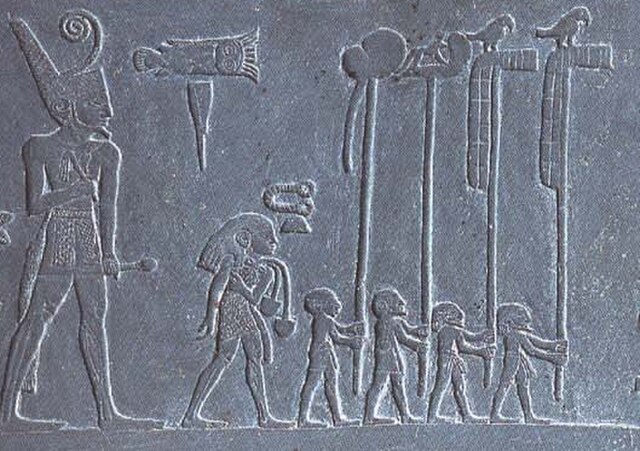
Narmer, a Predynastic ruler, accompanied by men carrying the standards of various local gods
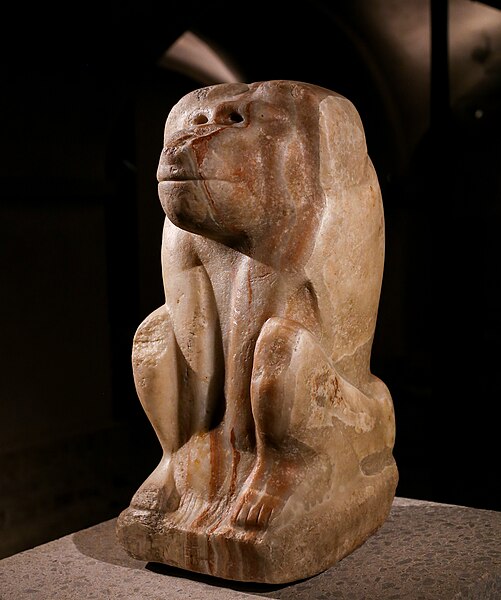
Statue of the baboon god Hedj-Wer, inscribed with the name of king Narmer
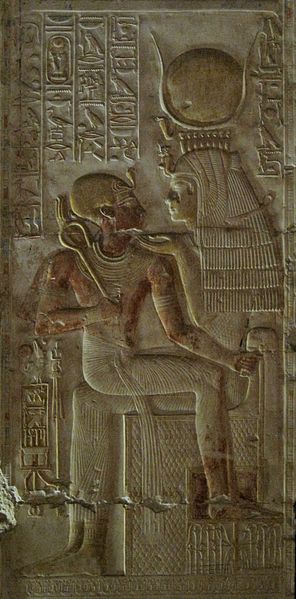
Isis, a mother goddess and a patroness of kingship, holds Pharaoh Seti I in her lap.